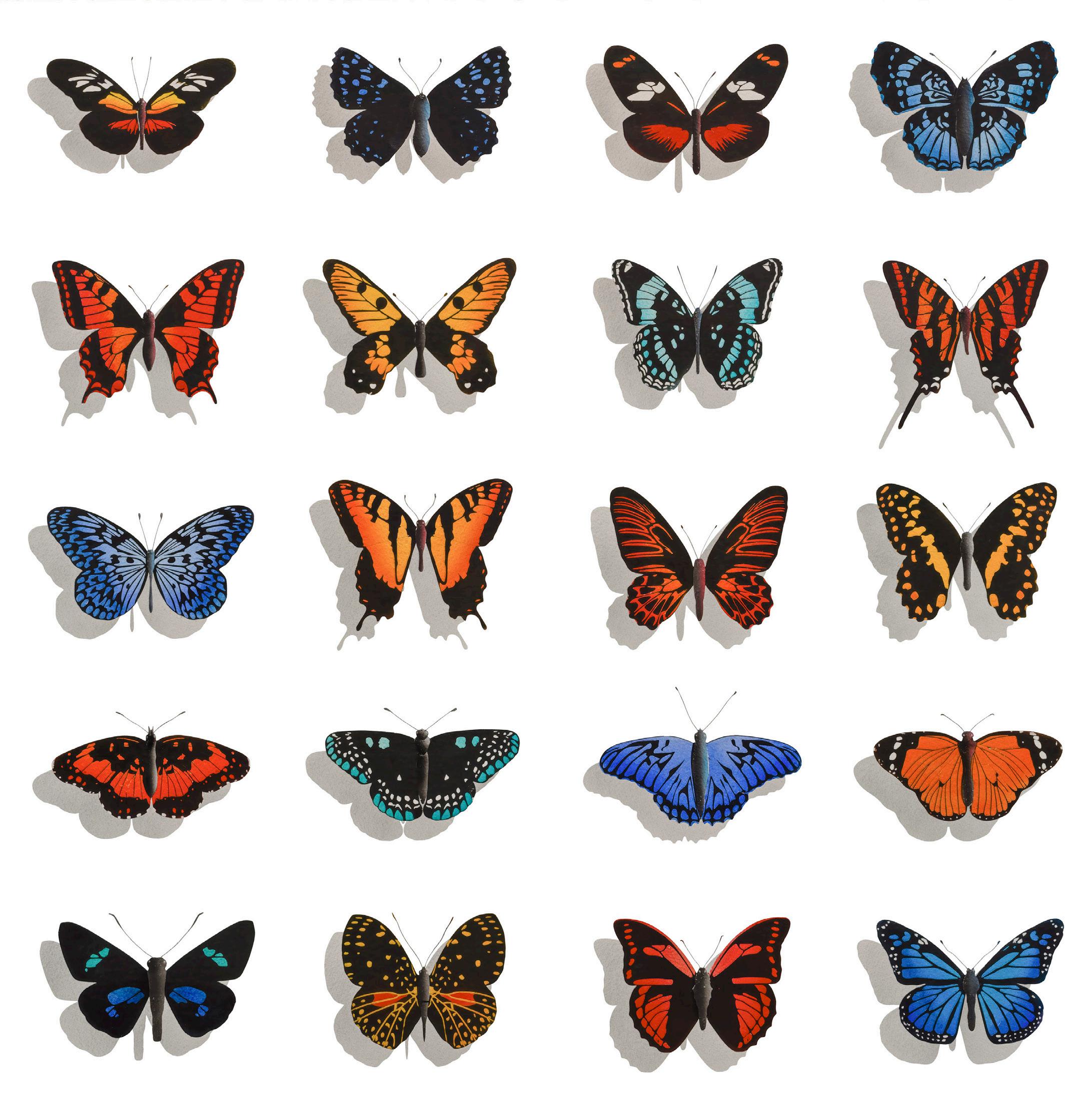GEORGE DOMBEK
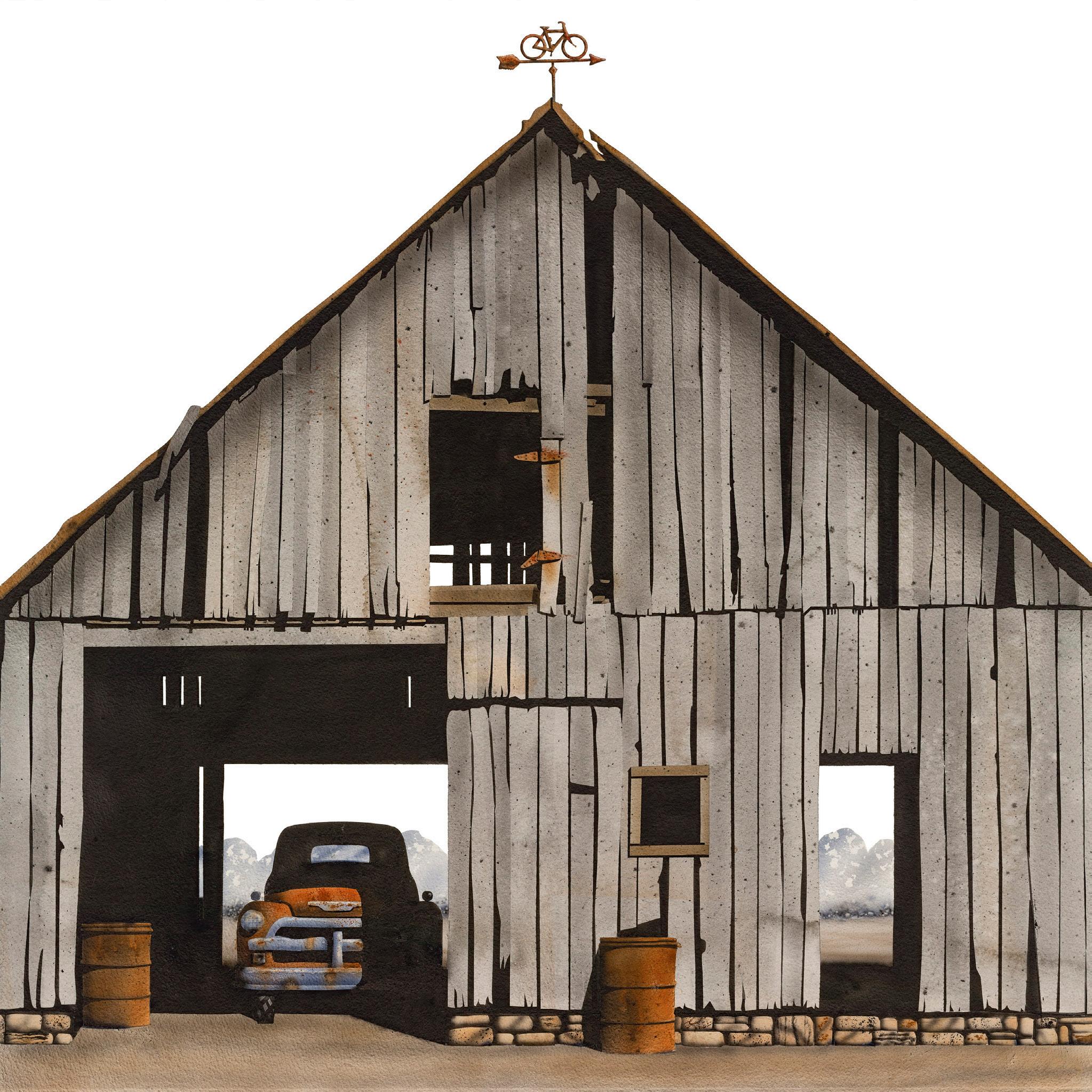

Tulsa, Oklahoma
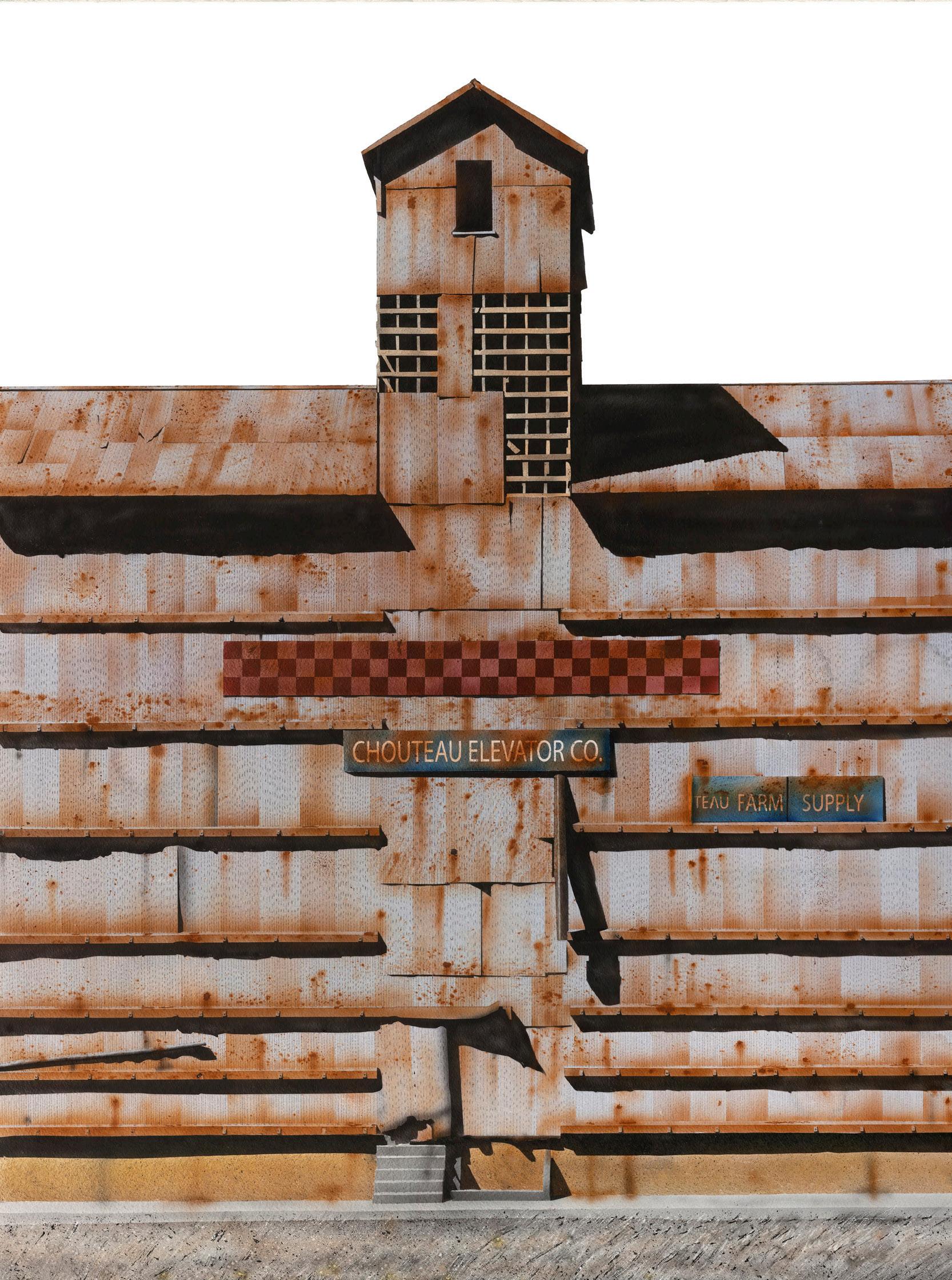

Tulsa, Oklahoma



Tulsa, Oklahoma


Tulsa, Oklahoma
Oklahoma Barns Bicycles Butterflies Birds
Reception: October 24 5pm-7pm
Oct 24, 2024 to Dec 12, 2024
George Dombek clearly is one of this country’s great artistic talents.” His unique vision and ability to bring life to a favored subject is the essence of his genius. Few artists are able to explore themes with such intensity and even fewer are able to capture the beauty in a bicycle in the sunshine or the abstraction inherent in his barn structures.
Dombek’s enormous success as a painter is readily understood. From his ability to manipulate negative space and observe the power of linear structures in the barn subject to his ability to handle with a flare the overlapping cycle imagery. His ability to balance shadow and physical structure recalls the formal interplay which made the works of Cezanne so meaningful. But even more so, the tribute paid to the Constructivists in these works is important to note. George Dombek is aware of art history and his place in it. Although his work deals with issues of representational art, his focus on geometry and critical placement of visual elements, reveal him as a Formalist, more interested in the purely visual and less upon the conceptual.
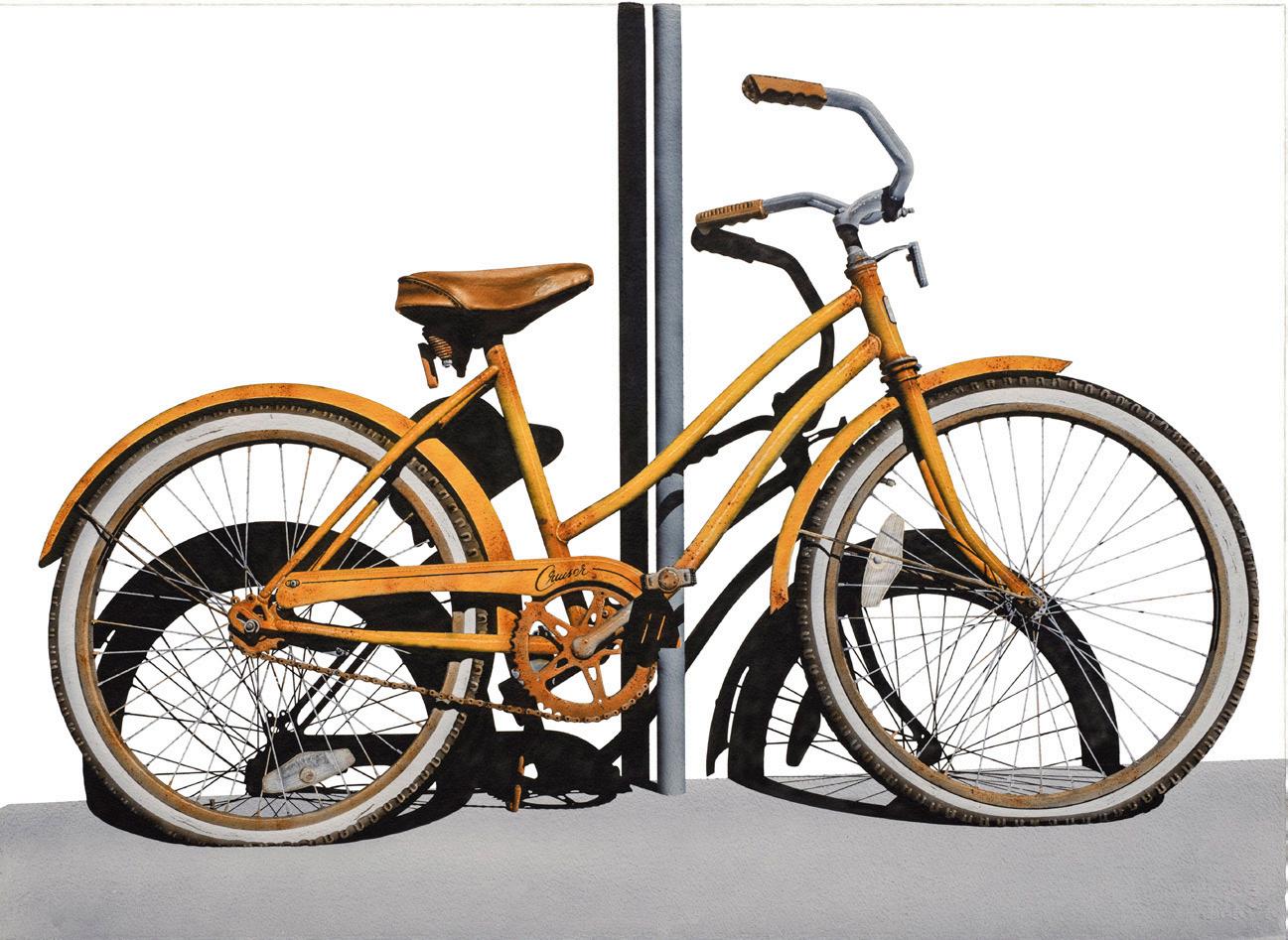
Association with the tenets of Modernism aside, Dombek’s paintings appeal on a visceral level. The cycle subjects carry us back to our youth and summer afternoons peddling in the bright sunlight. The barn imagery speaks to us of rural cultures past, long before technology and the destructive passage of time would leave these once beautiful and functional buildings to be reclaimed by nature’s power.
Dr. Louis A. Zona Executive Director
The Butler Institute of American Art
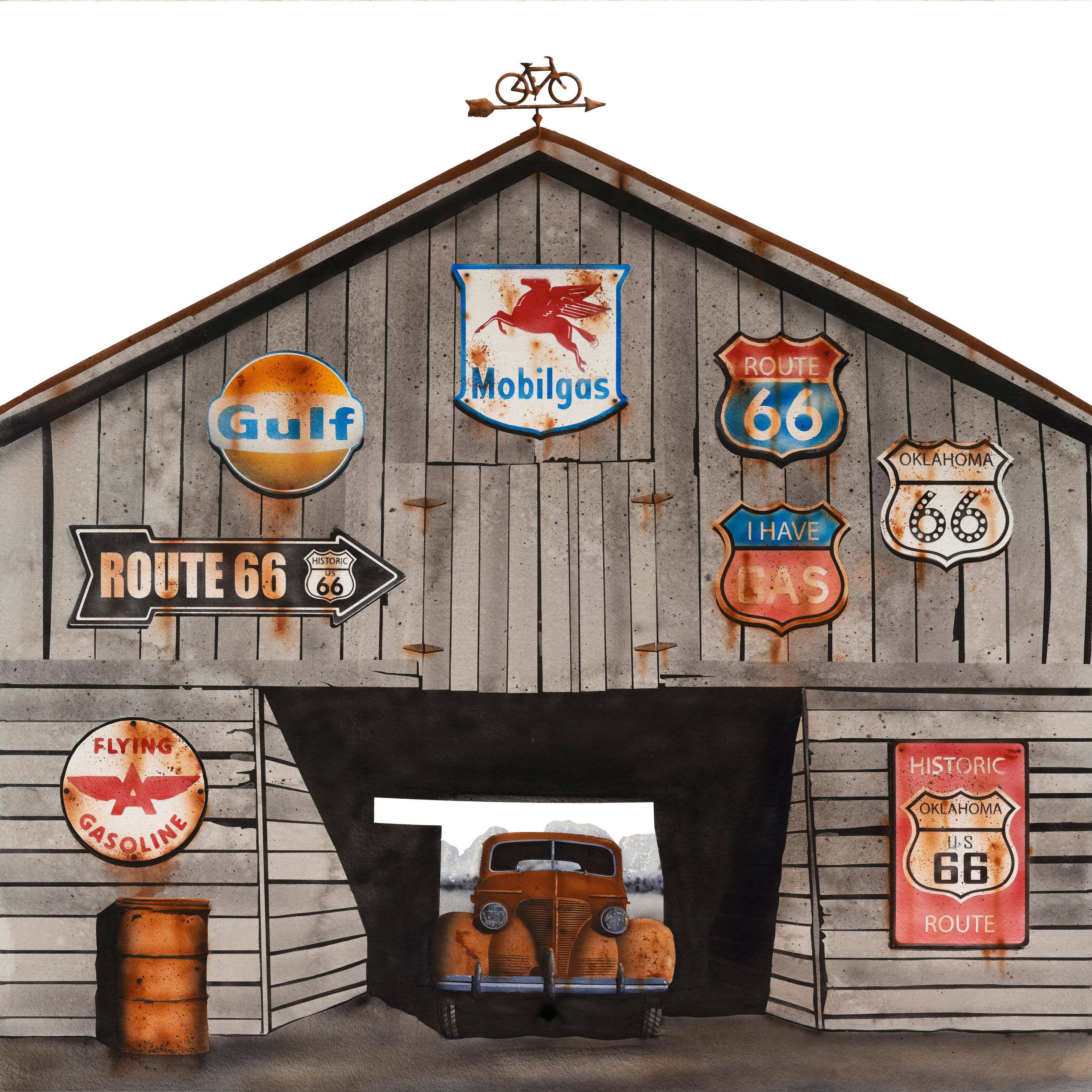
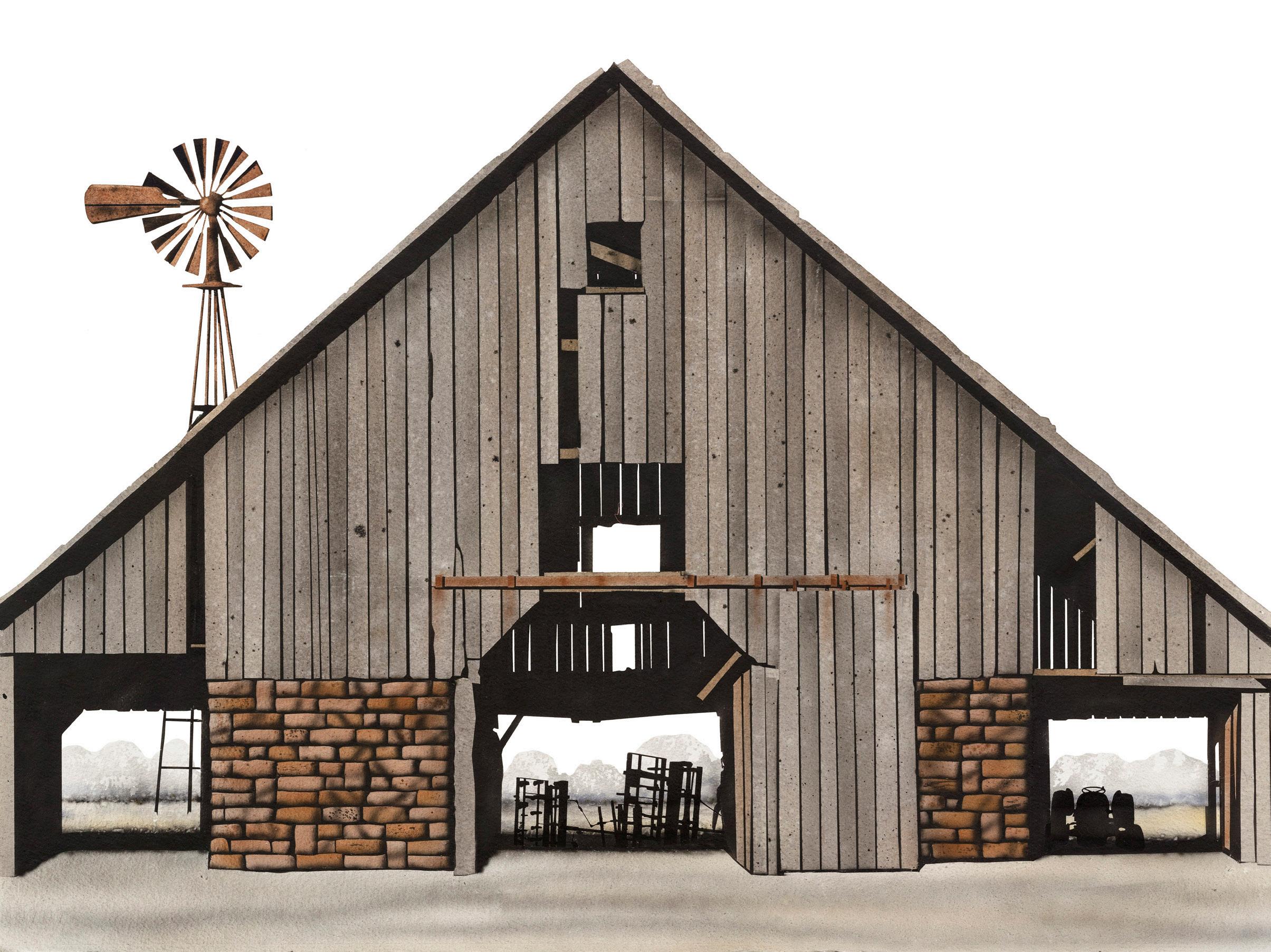

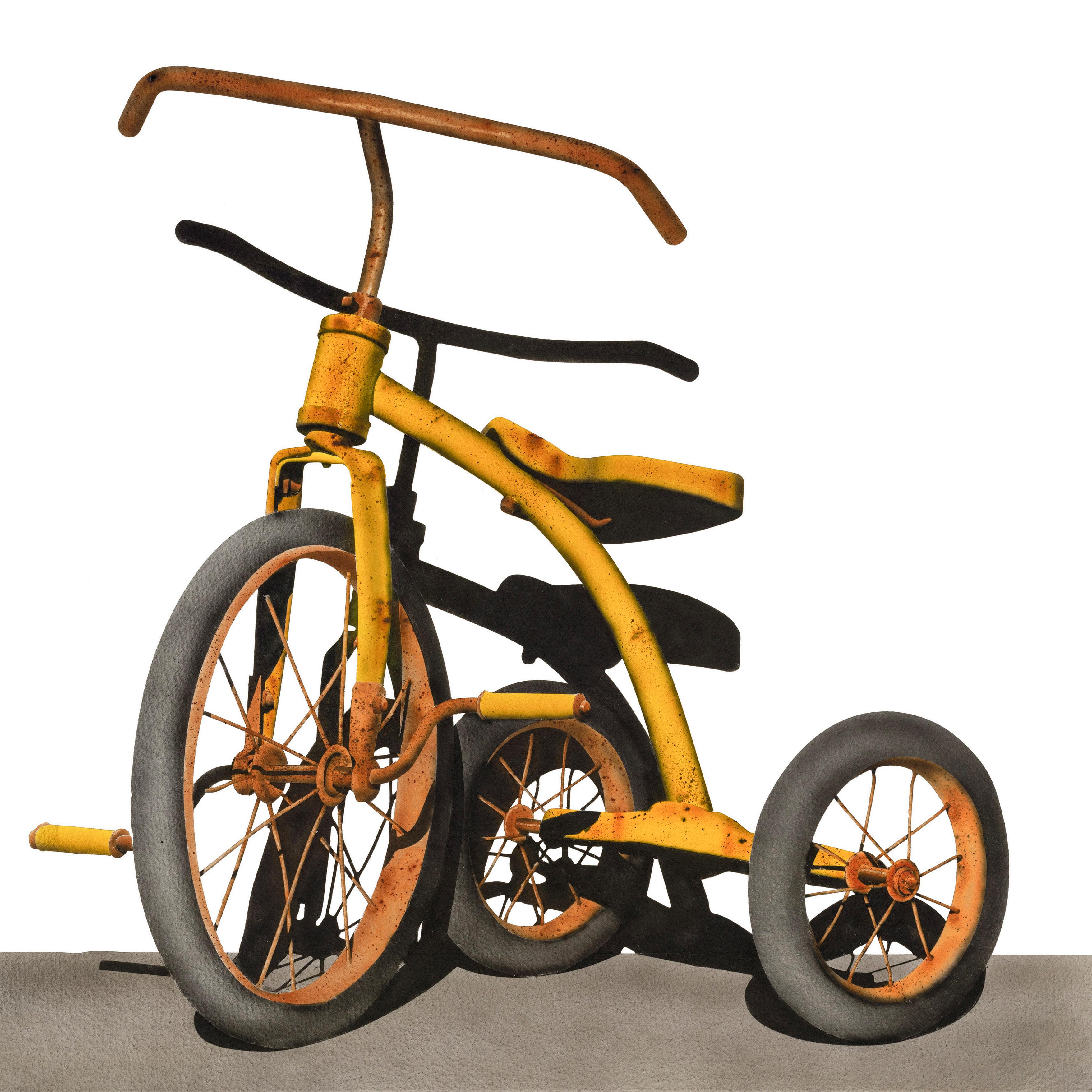
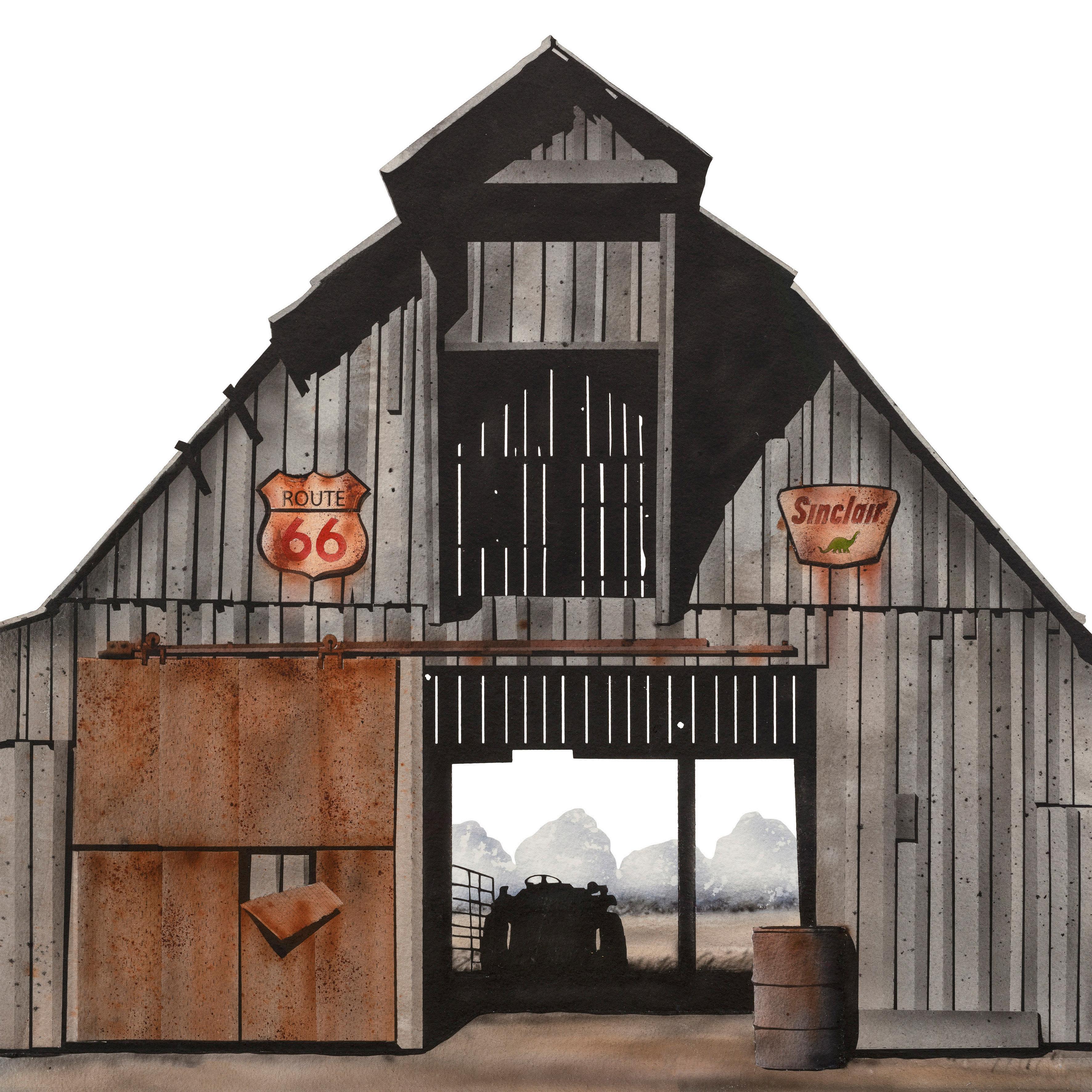
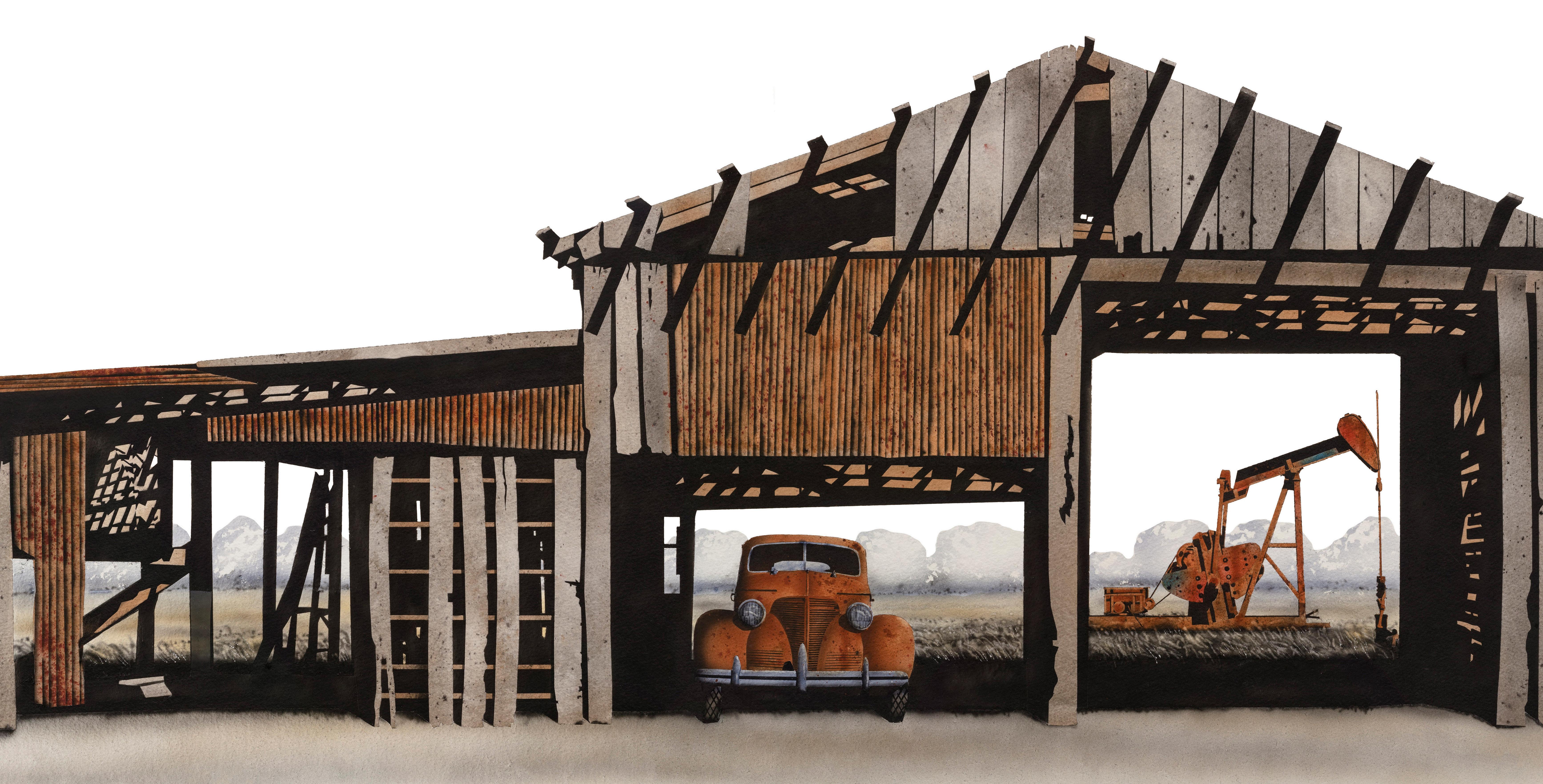
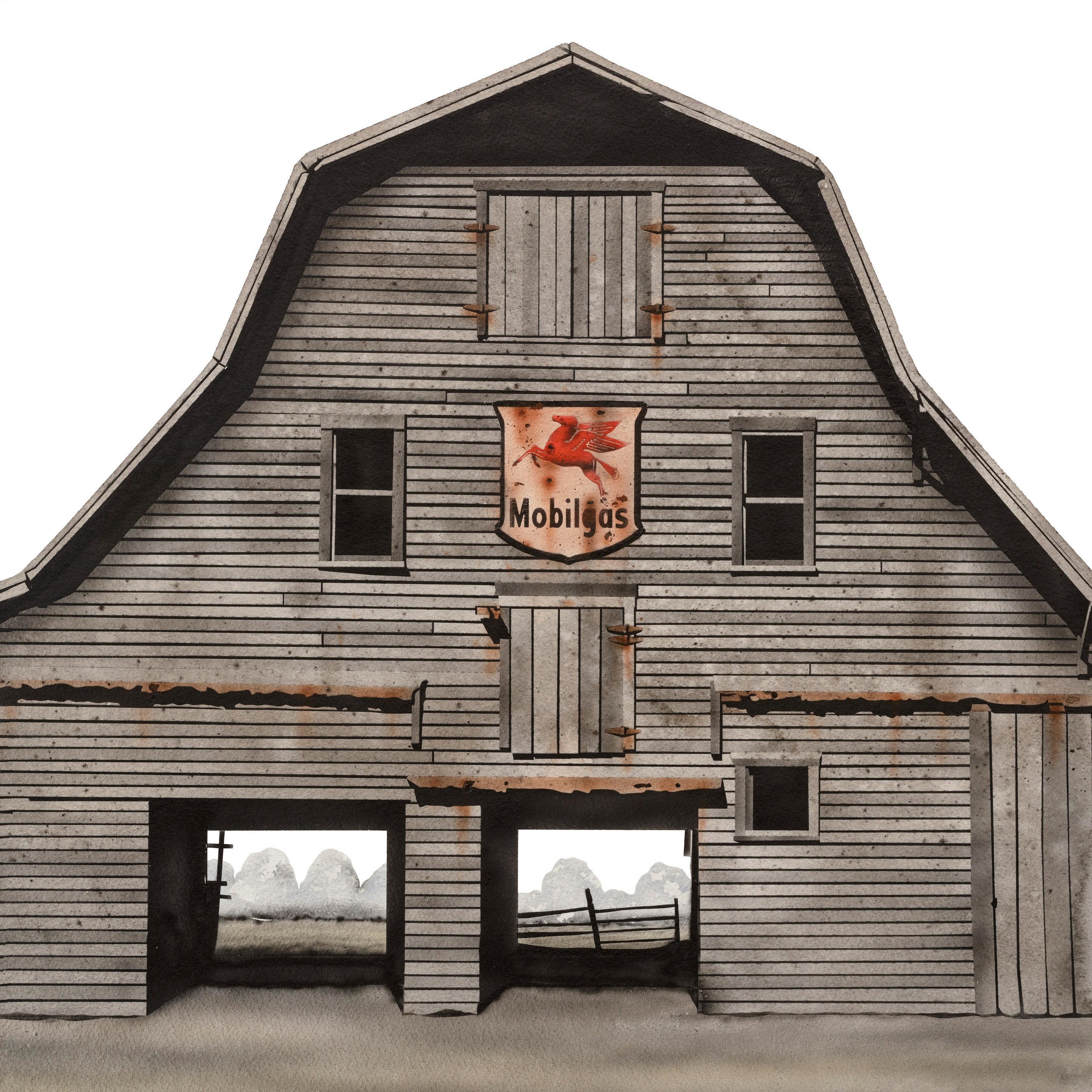
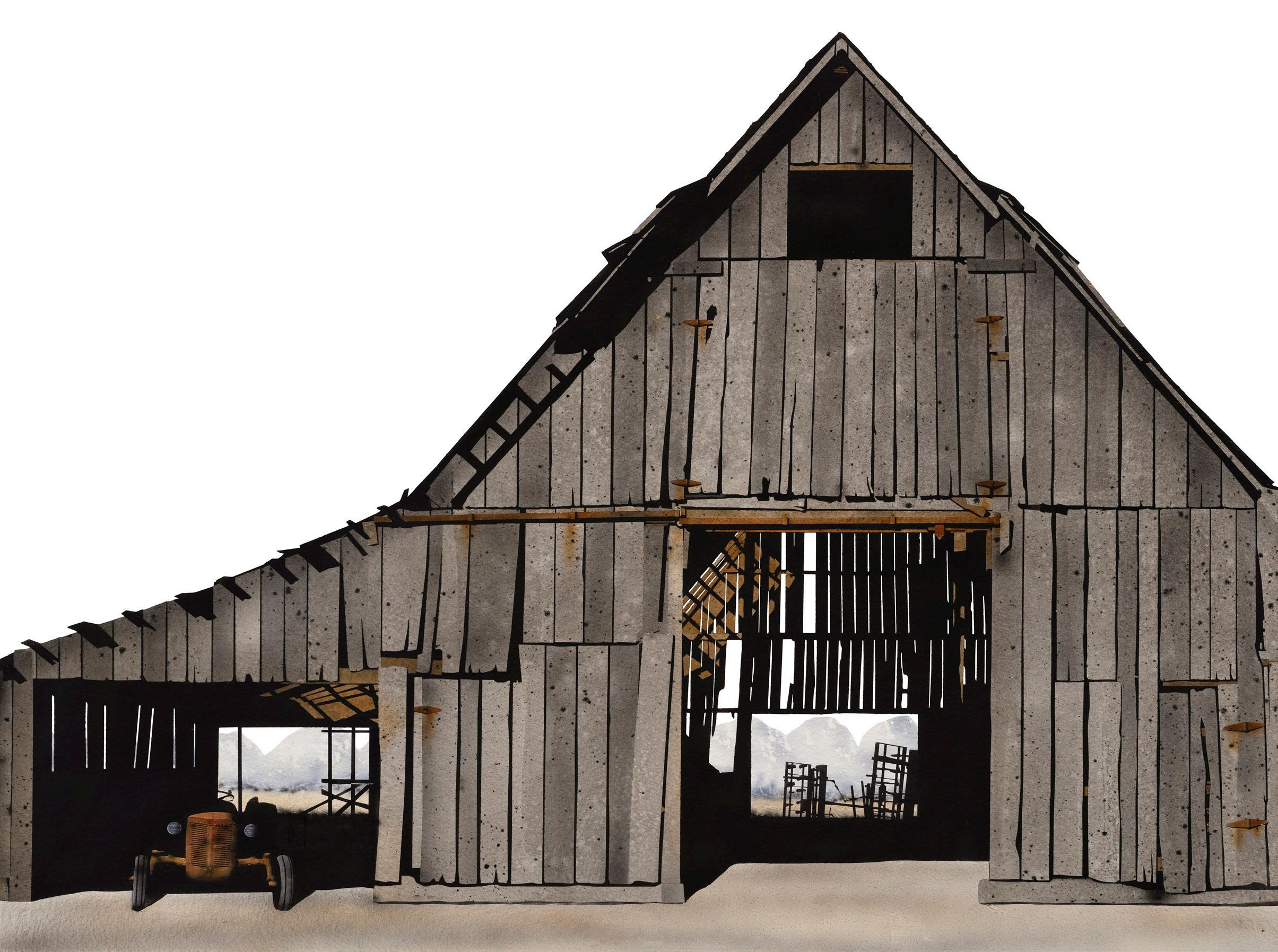
Just about anyone can see that George Dombek’s paintings are remarkable, though most people would probably not be able to describe this in art historical terms, or to explain why this is the case. George’s mastery of watercolor, in fact, entails a willingness to disregard the usual rules of the medium. Indeed, his effects are so unusual that a number of professional painters, on first encountering his paintings, have insisted that he didn’t create them with watercolor, although in fact he quite obviously did.
His watercolors are quite unlike what’s been done in watercolor before. And this has been an evolving process. His work has continued to grow. To my way of thinking, his most recent watercolors are his best.
Artistic originality is often associated with a technical innovation of some sort, which almost by accident leads to a new way of thinking about things, as well as by a willingness to break the rules. This is the case with George’s work, which brings the medium of watercolor into territory seldom if ever explored before.
At the turn of the century figures like John Singer Sargent and Winslow Homer brought great freedom to the practice of watercolor, and over the course of time their approach became codified by figures like Eliot O’Hara in a fashion that became increasingly constraining and academic. The central concept was that watercolor should be spontaneous, in a way that contrasted with the stiff and photographic look of academic painting, and this in turn led to other precepts: that is should be done in a dash, that one should avoid layering and the use of opaque pigments, that the whites should be indicated with white paper rather than with pigment. And this led to a profusion of work by amateur Sunday painters, which was technically and emotionally facile.
George himself produced some watercolors in a variation of this approach, which were essentially brush drawings in watercolor, modeled on the work of Van Gogh. But quite early in his career he began to turn the usual rules of watercolor inside out. In this regard, it’s significant that George is a very

gifted architect, got a degree from architecture school, and taught architecture for many years. Architects build up a design in a very rigorous way, starting with a grand plan and then devoting a lot of careful attention to every part. Every room presents a new architectural challenge. In addition, while architects generally start with some constraints, they’re generally not copyists but are designing creatively at every step. They’re inventing rather than just copying what they see.
George’s early watercolors, of crates, fire escapes, tobacco barns, and industrial buildings, often had a kinship with architectural renderings, and were constructed with rigorous attention to the laws of perspective. They then explored how the interplay of light and shade could create a further level of abstraction, creating dazzle patterns that break up the form in a way which is at once a bit confusing, a bit abstract, and at the same time intensely realistic. The game of interpreting what these paintings represent is not unlike the game of visually making sense of the world around us, which ranges from dazzling to obscurely dark. What’s curious is the way in which as George’s career has progressed, his work has become at once more “realistic” and at the same time more surreal and “abstract.” His paintings of river stones, for example, are marvels of intense realism, but at the same time are quite similar to abstract expressionist paintings in their play of color and brushwork and abstract patterns.
His recent paintings of butterflies, for example, achieve their glowing color through a [layering of paint], and I must confess that I still haven’t figured out how George creates water drops on a blade of grass that shimmer like a prism.
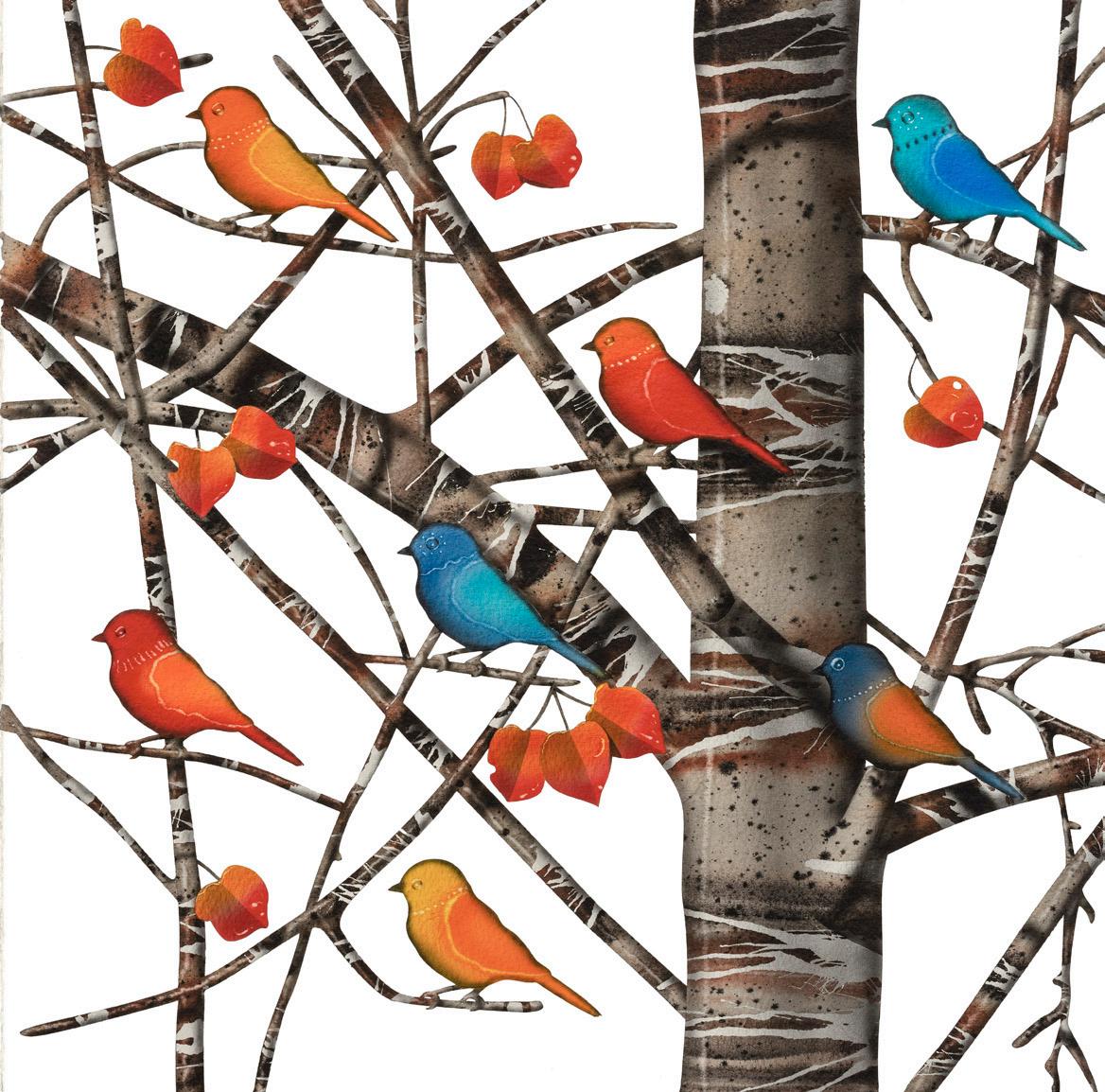
way. When we look at the actual world, only one plane of depth is in sharp focus, and everything else is more blurred. But George paints each sector in sharp focus, as if we were scrutinizing it from a few inches away. Most people probably don’t consciously take in this fact, but it accounts for the quality of super-reality that George’s paintings convey. Not reality but super-reality. To immerse ourselves in his paintings is to enter a mysterious zone, in which new approaches to design and technique lead us into a world that hasn’t been explored before. And when we step back out into the “real world” again, we see it differently.
For all their “realism,” George’s painting are based on skillfully organized abstract patterns, and he draws out these big, bold shapes in an interesting
Dr. Henry Adams
Professor of American Art Case Western Reserve University
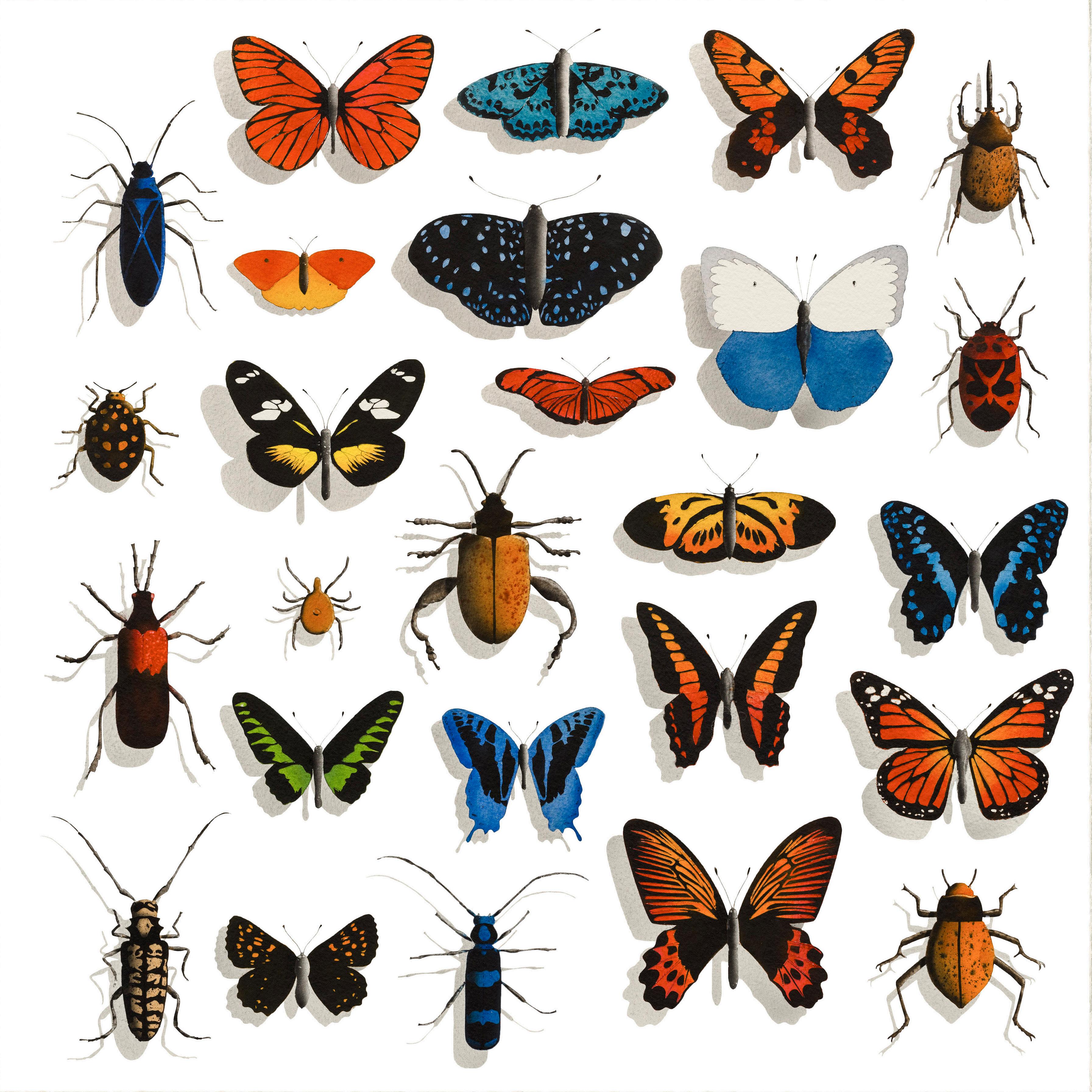
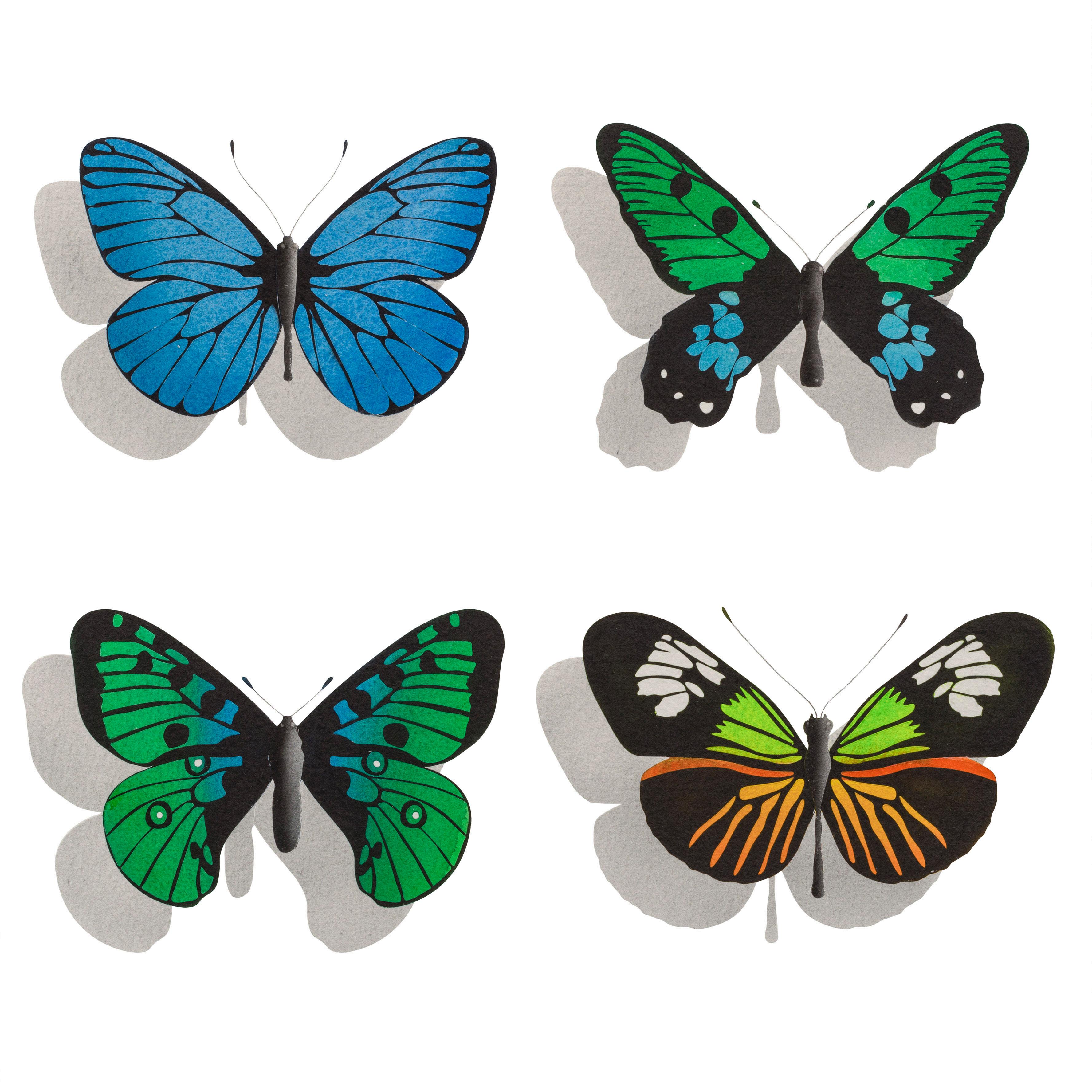
GEORGE DOMBEK
Education
M.F.A., Painting, University of Arkansas
B.ARCH, Design, University of Arkansas
Permanent Collections
Acxiom Corporation, Conway, Arkansas
Aerojet General, La Jolla, California
Alltel Corporation, Little Rock, Arkansas
Anstaff Bank, Berryville, Arkansas
Anstaff Bank, Huntsville, Arkansas
Arab Heritage Gallery, Al-Khobar, Kingdom of Saudi Arabia
Arkansas Museum of Fine Arts, Little Rock, Arkansas
Arkansas Childrens Hospital, Little Rock, Arkansas
Arkansas Childrens Hospital, Springdale, Arkansas
Arkansas Democrat Gazette, Little Rock, Arkansas
The Artery Association, Bethesda, Maryland
Arts and Science Center, Pine Bluff, Arkansas
Bank of Commerce, Tulsa, Oklahoma
Barnett Bank, Jacksonville and Tampa, Florida
Beaumont Art League, Beaumont, Texas
Birmingham Museum of Art, Birmingham, Alabama
Blessings, Fayetteville, Arkansas
W. C. Bradley Company, Columbus, Georgia
Butler Institute of American Art, Youngstown, Ohio
Carnegie Institute Museum of Art, Pittsburgh, Pennsylvania
Chase Manhattan Bank, New York, New York
City Hall, Tallahassee, Florida
Crocker Bank, Los Angeles, California
Crystal Bridges Museum of American Art, Bentonville, Arkansas
Debevoise and Plimpton, Washington, D. C.
Equity Life Assurance, New York, New York
Fay Jones School of Architecture, University of Arkansas, Fayetteville, Arkansas
Florida National Bank, Jacksonville, Florida
Fort Smith Art Center, Fort Smith, Arkansas
Golden Artist Colors, New Berlin, New York
Hallmark Card Corporation, Kansas City, Missouri
Henderson State University, Arkadelphia, Arkansas
Historic Arkansas Museum, Little Rock, Arkansas
Hyatt Regency, Chicago, Illinois
IBM Corporation, Charlotte, North Carolina
Kaplan, McLaughlin, Diaz, San Francisco, California
Kimberly-Clark Corporation, Little Rock, Arkansas
Louisiana College, Alexandria, Louisiana
McDonalds Corporation, Chicago, Illinois
Meadows Museum of Art, Shreveport, Louisiana
Mercy Hospital & Medical Center, Chicago, Illinois
Metro-Dade Center, Miami, Florida
M. Graham & Company, West Linn, Oregon
Mobile Oil, Houston, Texas
Morgan Stanley, Dean Whitter, Little Rock, Arkansas
Murphy Oil Corporation, El Dorado, Arkansas
Nantucket Industries, New York, New York
NexJet Corporation, Long Beach, California
Northwest Arkansas Community College, Bentonville, Arkansas
Northwest Mutual Life, Milwaukee, Wisconsin
NuVell GMAC, Little Rock, Arkansas
Parthenon Galleries, Nashville, Tennessee
Presqu’ile Winery, Santa Maria, California
The Preacher’s Son, Bentonville, Arkansas
Royal Commission, Jubail, Kingdom of Saudi Arabia
School of the Ozarks, Point Lookout, Missouri
Southern Bell Corporation, Miami, Florida
Springfield Art Museum, Springfield, Missouri
Stephens, Inc., Fayetteville, Arkansas
Stephens, Inc., Little Rock, Arkansas
Sun Bank, Jacksonville, Florida
3M, St. Paul, Minnesota
Tyson Foods, Inc., Springdale, Arkansas
University of Arkansas, Fayetteville, Arkansas
University of Arkansas Medical Sciences, Little Rock, Arkansas
University of Central Arkansas, Conway, Arkansas
W. C. Bradley Company, Columbus, Georgia
Western Electric, New York, New York
William F Laman Public Library, North Little Rock, Arkansas
3M, St. Paul, Minnesota
Solo Exhibitions
2024 Exhibit Art Gallery, Tulsa, Oklahoma
2022 David Lusk Gallery, Memphis, Tennessee
2021 Butler Institute of American Art, Youngstown, Ohio
2020 David Lusk Gallery, Memphis, Tennessee
2019 Friesen Gallery, Sun Valley, Idaho Blessings, Fayetteville, Arkansas
2018 David Lusk Gallery, Nashville, Tennessee
2017 David Lusk Gallery, Memphis, Tennessee
2014 Argenta Gallery, North Little Rock, Arkansas
2009 Greg Thompson Fine Art, Little Rock, Arkansas
2008 Blessings, Fayetteville, Arkansas
2006 Marie Walsh Sharpe Art Foundation, New York City, New York
2005 Argenta Art Gallery, Little Rock, Arkansas
2004 Bresler Eitel Art Gallery, Milwaukee, Wisconsin
University of Central Arkansas, Conway, Arkansas (sculpture installation)
2003 Butler Institute of American Art, Youngstown, Ohio
Argenta Art Gallery, Little Rock, Arkansas
2000 Tyson Foods Corporate Headquarters, Springdale, Arkansas
1999 Taylors’ Contemporanea Fine Arts, Hot Springs, Arkansas
1997 Arts and Science Center, Pine Bluff, Arkansas
1996 Bell Gallery, Memphis, Tennessee
Indigo Gallery, Boca Raton, Florida
Palmer Gallery, Hot Springs, Arkansas
1995 University of Arkansas, Fayetteville, Arkansas
M. A. Duran Gallery, Tulsa, Oklahoma
University of Central Arkansas, Conway, Arkansas
1994 Arkansas Museum of Fine Arts, Little Rock, Arkansas
1993 Nan Miller Gallery, Rochester, New York
1992 Leslie Levy Fine Arts, Scottsdale, Arizona
1991 Rosenfeld Gallery, Philadelphia, Pennsylvania
1990 Florida A & M University, Tallahassee, Florida
621 Gallery, Tallahassee, Florida
1988 Butler Institute of American Art, Youngstown, Ohio
Florida A & M University, Tallahassee, Florida
1987 O. K. South Works of Art, Miami, Florida
1986 Fay Gold Gallery, Atlanta, Georgia
Lemoyne Center for Visual Arts, Tallahassee, Florida
1985 Florida Center for Contemporary Art, Tampa, Florida
Gallery Contemporenea, Jacksonville, Florida
Florida A & M University, Tallahassee, Florida
1984 The Savannah College of Art and Design, Savannah, Georgia
The University of Tampa, Tampa, Florida
1983 Four Arts Center, Institute of Contemporary Arts, Tallahassee, Florida
1982 Arab Heritage Gallery, Al-Khobar, Kingdom of Saudi Arabia
1981 Capricorn Galleries, Bethesda, Maryland
1979 Youngstown State University, Youngstown, Ohio
William Sawyer Gallery, San Francisco, California
Texas Technical University, Lubbock, Texas
Massillon Museum, Massillon, Ohio
San Jose Museum of Art, San Jose, California
1978 American Institute of Architects, San Francisco, California
Greater Birmingham Arts Alliance, Birmingham, Alabama
Chautauqua Art Galleries, Chautauqua, New York
1977 William Sawyer Gallery, San Francisco, California
University of Arkansas, Fayetteville, Arkansas
